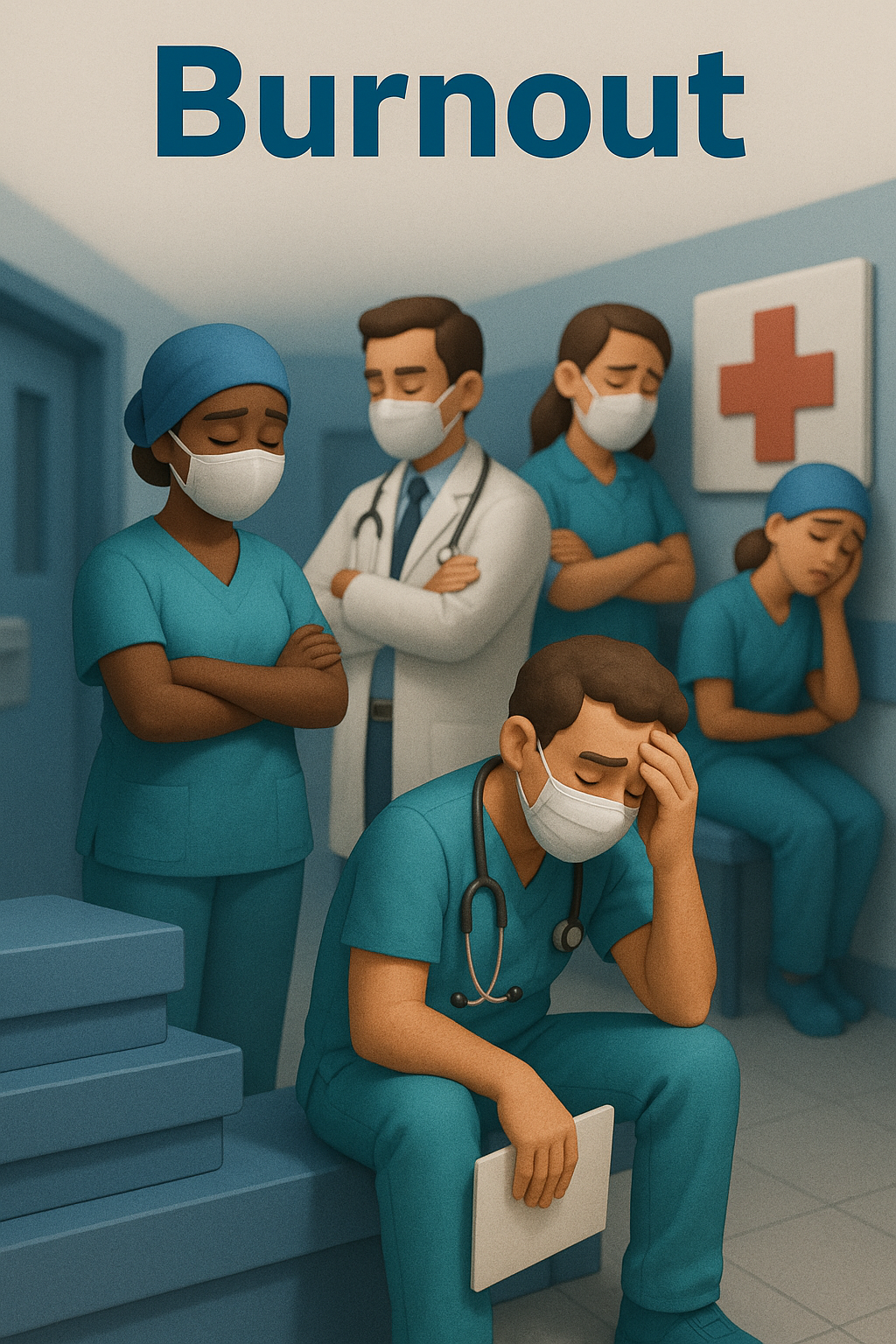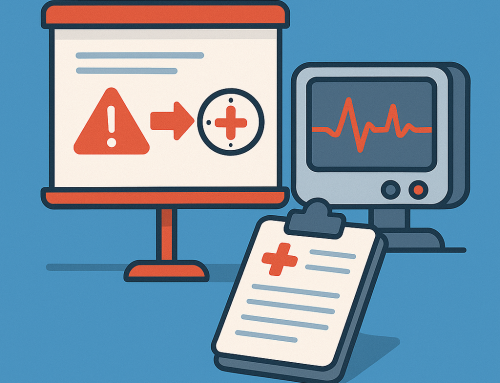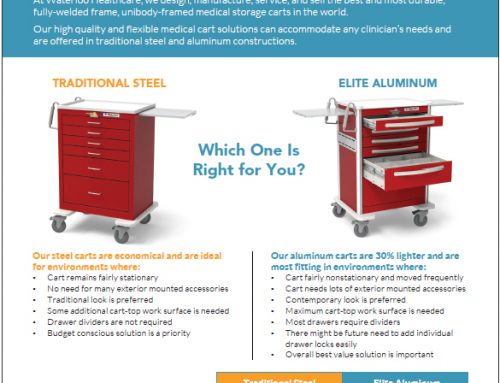Reducing Burnout in Emergency Medicine: Systemic Solutions Beyond Self-Care
Emergency medicine physicians and nurses face some of the highest burnout rates in healthcare. So many experience symptoms of emotional exhaustion, but that’s only the beginning. It’s become imperative that healthcare facilities that want to retain talented emergency medicine professionals look beyond individual resilience to address any issues that cause burnout.
Because emergency departments are notoriously unpredictable, staff members prioritize urgency, forcing them to make decisions under pressure. This results in emotional pressure and physical demands. When burnout reaches critical levels, patient safety suffers, medical errors increase, and many physicians leave the profession entirely.
This article explores the factors that drive burnout in emergency medicine and the organizational changes that can improve clinicians’ well-being and patient care.
How Emergency Medicine Burnout Became a Crisis
Emergency medicine as a specialty started in the 1960s and 1970s in response to the need for physicians to train in acute care. As a result, early emergency departments were often understaffed and under-resourced.
Over the following decades, emergency departments became the safety net for America’s healthcare system. Patients without primary care access, those dealing with mental health crises, and those who had long-term disease complications increasingly started to turn to emergency departments as their only option for care.

By the 2000s, emergency departments were regularly operating above capacity. Boarding patients in need of beds became routine, and some hospitals held patients in the emergency department for 24 hours or longer. Increased pressures from the opioid epidemic, increasing administrative burdens from electronic health records, and growing violence among healthcare workers added extra pressure in the 2010s.
The world completely changed during the COVID-19 pandemic. Emergency medicine professionals faced previously unseen volumes, resource shortages, emotional damage from making impossible choices, and personal health risks. Burnout rates skyrocketed, forcing many clinicians to leave the field permanently.
Why Self-Care Isn’t Enough
Healthcare organizations have tried to combat burnout by offering Wellness resources, including meditation apps, resilience training, yoga classes, and mental health counseling. While each of these interventions has its place, the results focused on addressing symptoms instead of the root causes.
Emergency physicians can’t meditate away inadequate staffing, and nurses can’t yoga their way out of 12-hour shifts with no blight breaks. Many wellness programs suggest that burned-out clinicians simply need better coping skills rather than better working conditions.
In the end, the most important factors that drive burnout come down to issues within processes. Workload, control over schedule, administrative burden, and organizational support are better predictors of burnout than personal resilience or coping strategies.
Solutions That Actually Work
Staffing Models and Schedule Design
providing staff with enough resources and relief as the most direct way to reduce burnout. Health care facilities that work with a minimum of staffing requirements often lead to the most turnover. So, build schedules that account for patient care and staff safety. This includes making sure that physicians and nurses have enough coverage during peak hours.
Emergency departments that give physicians and nurses input in their schedules also see lower burnout rates. Sustainability ultimately comes from reducing excessive consecutive shifts, building inaccurate recovery time, and creating predictable schedules.
Workflow Optimization and Process Improvement
Many emergency departments haven’t changed their operating systems in decades. New technology and processes to reduce cognitive workload, wasted time, and activities that don’t directly relate to patient care can significantly reduce burnout.
Dedicated teams that focus on patient intake, laboratory coordination, and discharge planning help reduce the number of emergency tasks clinicians must manage. Creating standardized protocols can speed decision-making while maintaining quality care.
Designing environments that impact workflow efficiency, like equipping supplies and equipment that are logically organized and easily accessible, reduces the time that clinicians need to search. Keeping well-stocked medical carts and storage solutions takes a load off clinicians’ minds during high-stress situations.
Technology That Helps Rather Than Hinders
Healthcare facilities that optimize electronic health records to reduce documentation issues eliminate the need for redundant data entry. Voice recognition software, templates for common scenarios, and documentation technologies can also significantly reduce time spent on computers.
Many new systems also support decision tools that help make healing easier. Alerts and notifications can be calibrated to provide useful information without overwhelming clinicians.
Organizational Culture and Leadership Support
Leadership has a key role in maintaining a healthy work environment. Emergency department leadership sets the tone for the rest of the work environment, and leaders who prioritize the well-being of their workers are more likely to protect teams from unnecessary demands that could affect their emotional well-being.
Zero-tolerance policies for workplace violence, comprehensive security measures, and trauma support for staff all contribute to organizational safety. Leaders who also provide debriefing sessions can provide psychological support and opportunities for learning.
Addressing the Boarding Crisis
Because the overflow of patient boarding in emergency departments puts a huge strain on emergency medicine staff, find ways to develop a comprehensive strategy to improve patient flow. Think about expanding patient capacity, using admission prediction models, and creating dedicated transition units.
People Also Ask
How long does it take to recover from burnout? Recovery from burnout depends on how severe the symptoms are and whether there are systemic changes. Mild burnout can improve within weeks when working conditions change, but severe burnout may require months or even a career transition period without addressing the root causes. Symptoms of burnout typically return even after time off.
What are the early warning signs of burnout in emergency medicine? Early warning signs include chronic fatigue that doesn’t improve even with rest, increased agitation with patients and colleagues, reduced empathy, difficulty concentrating, frequent illness, changes in sleep patterns, and decreased job satisfaction. Many people also experience headaches, gastrointestinal issues, and muscle tension.
Do emergency physicians leave emergency medicine due to burnout? Many emergency physicians transfer to specialties like urgent care, telemedicine, hospital administration, or leave clinical medicine entirely due to burnout. Most start with reducing overall hours, but extreme cases of burnout due to stress often lead to physicians quitting entirely.
What does burnout cost hospitals financially? Hospitals with high levels of burnout can cost up to $1 million per physician. When physicians lose concentration due to burnout, they’re more likely to incur malpractice claims, reduced productivity, higher absenteeism, and decreased patient satisfaction. Burnout leads to an industry cost of $4.6 billion annually.
Conclusion
Reducing burnout comes down to commitment to solving health care organizations’ root causes. Solutions exist, but they require investment in the right staffing, updates in design processes, supportive leadership, and friendly work environments.
Health care facilities that take these challenges seriously can retain emergency medicine professionals much longer and provide safer patient care. There has never been a better time for me to call for meaningful systematic change.
For over 50 years, Waterloo Healthcare has supported emergency medicine professionals with durable, intelligently designed medical carts that improve workflow efficiency and reduce cognitive burden during critical situations. Contact our team to learn how our customizable solutions can support your emergency department staff.






